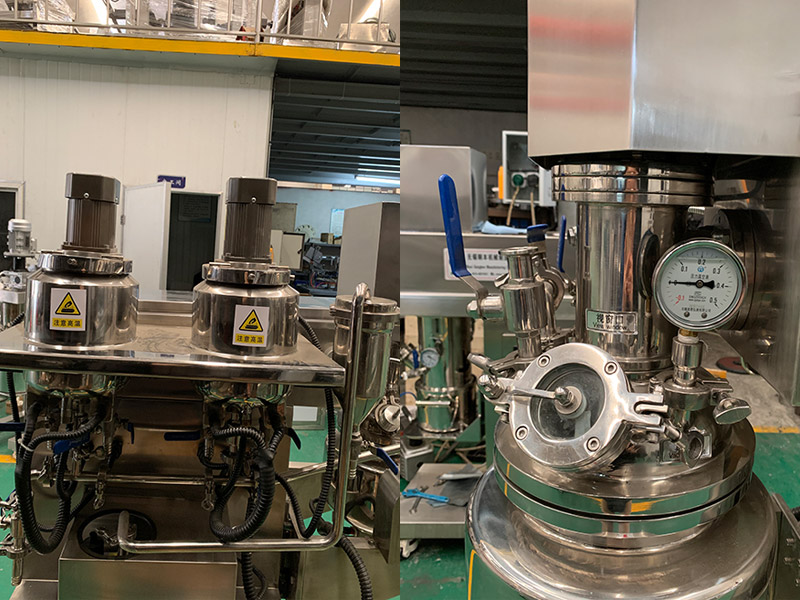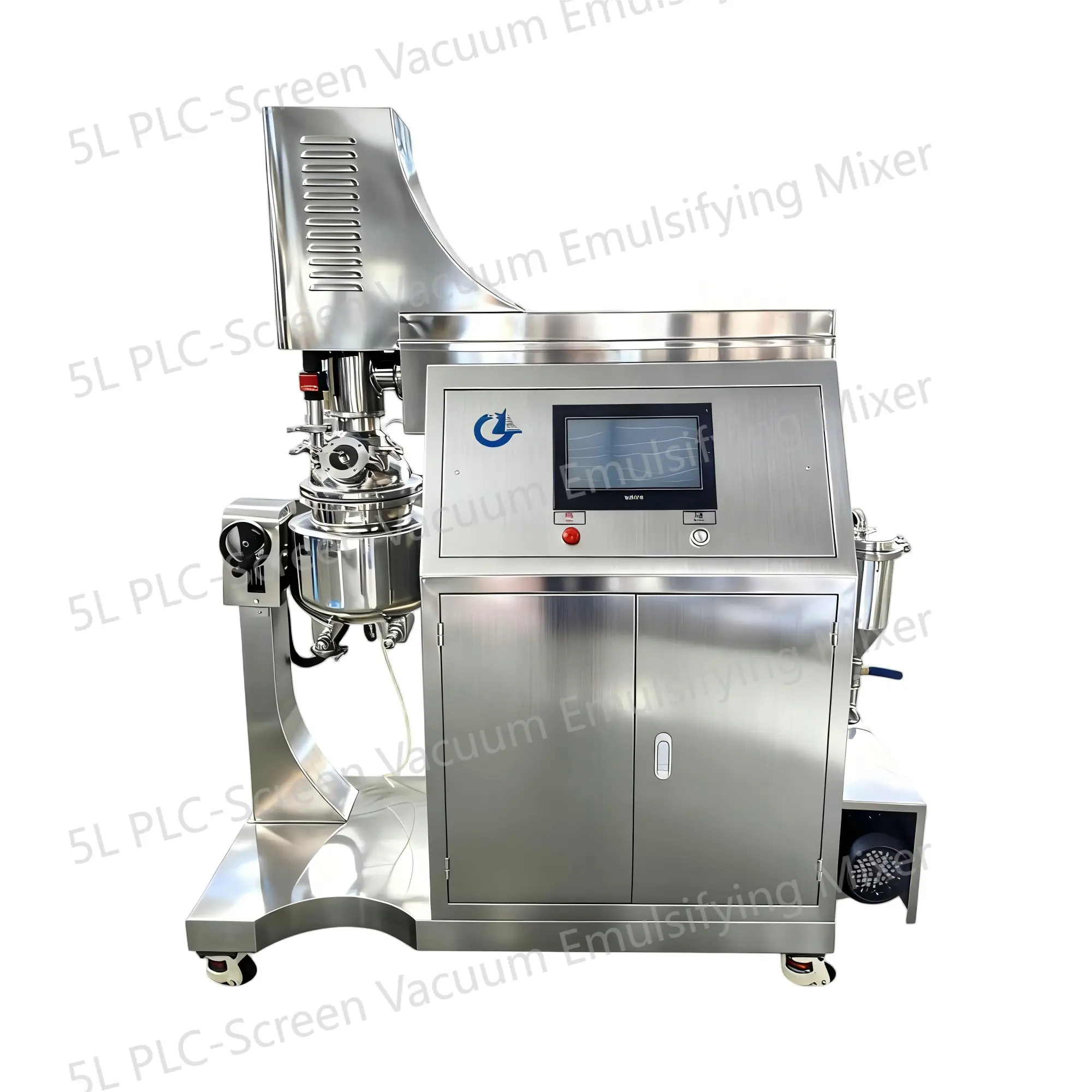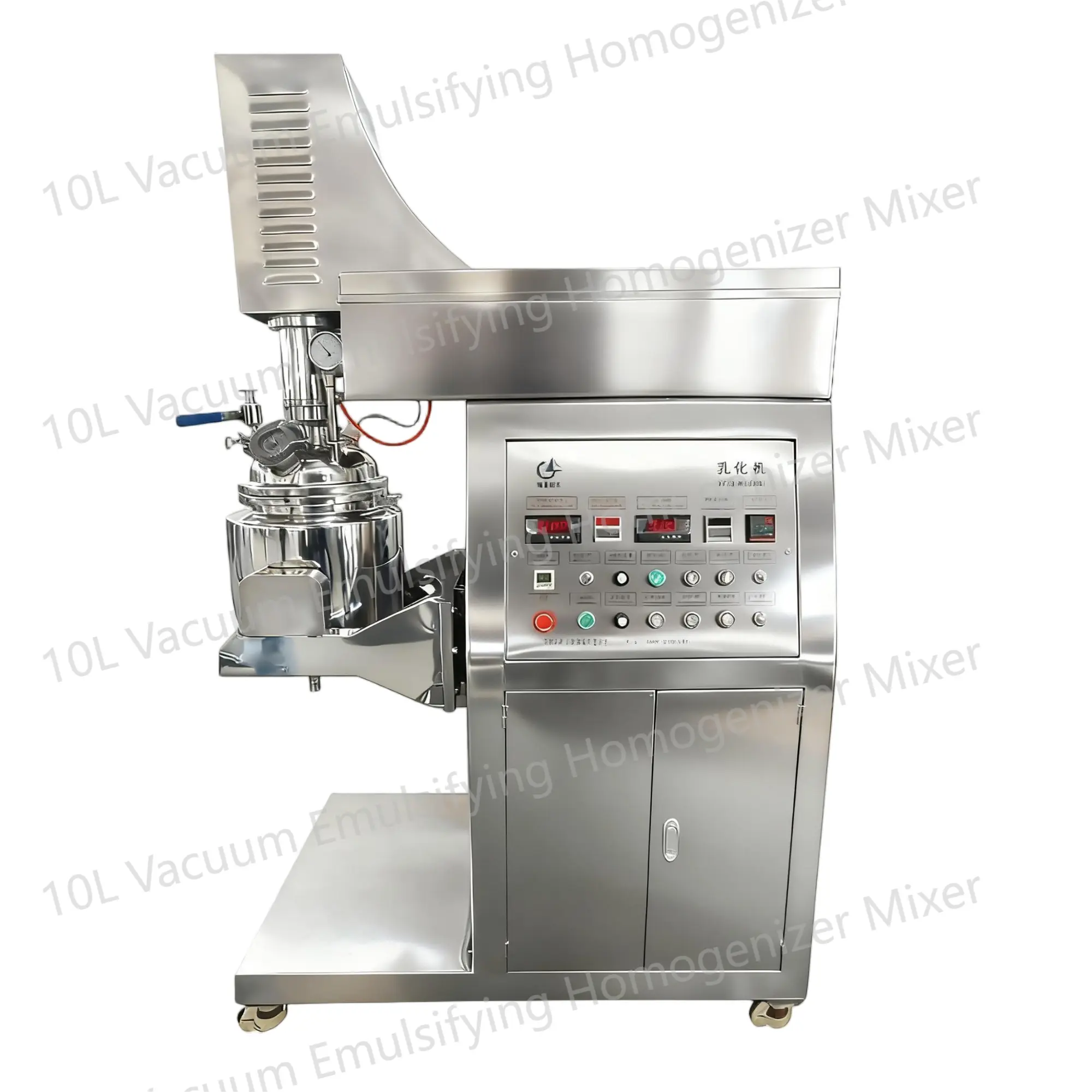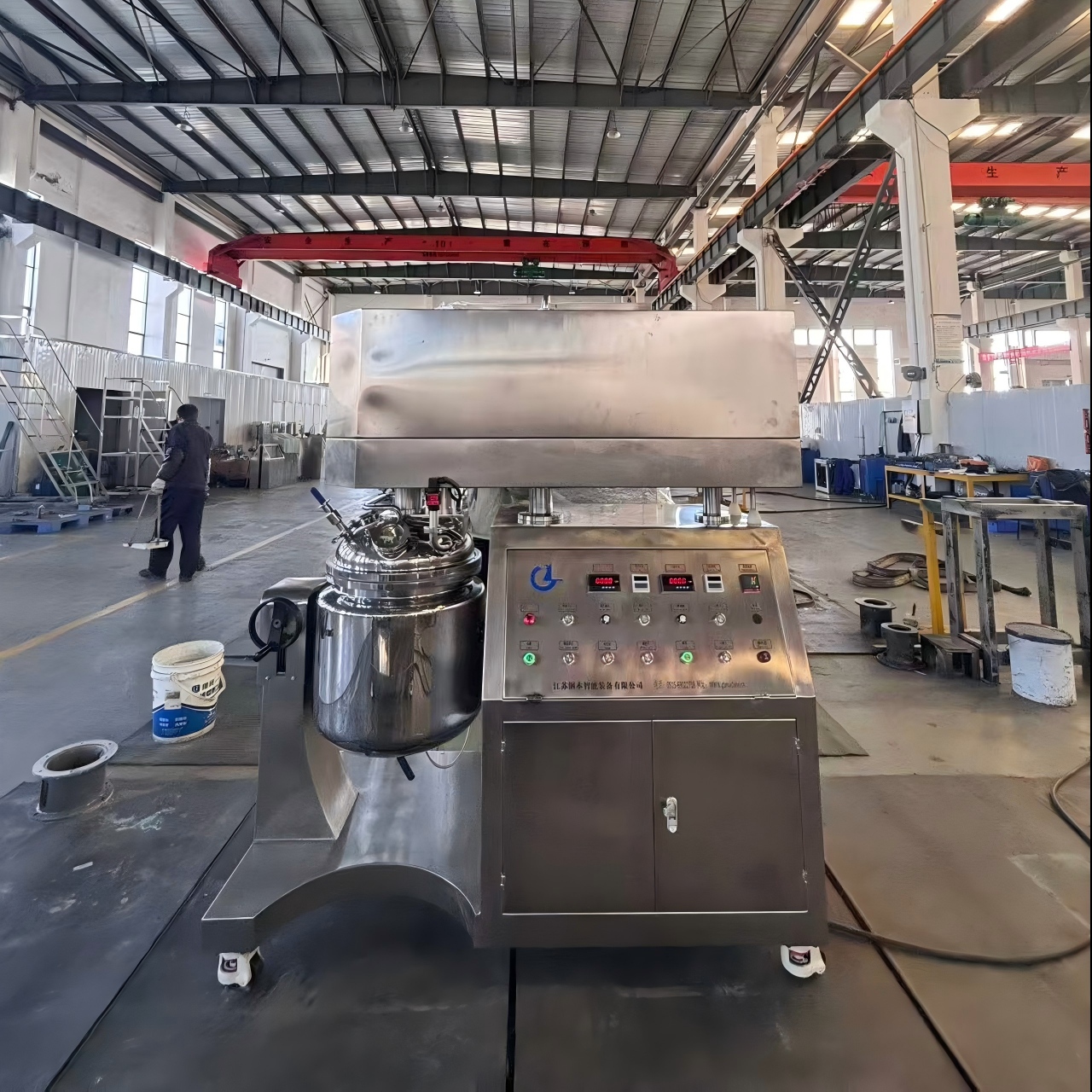Understanding the Emulsification Process and Its Role in Mixing Quality
Jiangsu GangBen Mixer Manufacturer specializes in packaging machinery research and development, design, manufacturing. In order to provide customers with better products and services, we always take the market demand as the driving force and basis for continuous innovation, and make solemn commitments to the market and society with professional technical design.The emulsification process and its role in mixing quality are crucial in many industries, especially in the food, cosmetic and pharmaceutical sectors. The following details the vacuum emulsifying mixer emulsification process and its implications for achieving high mixing quality.
Emulsification is the process of mixing two or more incompatible liquids (such as oil and water) to form a stable, uniform mixture. This process usually involves adding an emulsifier, which is a compound that helps reduce the surface tension between incompatible liquids, allowing them to mix and form a stable emulsion.
The role of emulsifiers: Emulsifiers have a dual attraction to both oil and water molecules. They consist of a hydrophilic head (attracted to water) and a hydrophobic tail (attracted to oil). This double attraction allows the emulsifier to bridge the gap between oil and water, creating a stable and uniform mixture.
Emulsion type: According to the type of emulsifier and emulsification conditions, two types of emulsion can be formed: oil-in-water (O/W) and oil-in-water (W/O). In an oil/water emulsion, oil droplets are dispersed in a continuous phase of water, while in an oil/water emulsion, water droplets are dispersed in a continuous phase of oil.

Role in mixing quality The emulsification process plays a crucial role in the mixing quality of the final product. Here are some of the key factors that affect the quality of the mix:Emulsifier choice: The choice of emulsifier is crucial because it determines the type and stability of the emulsion. Different emulsifiers have different properties and may be more suitable for specific applications. For example, in the food industry, emulsifiers such as lecithin, monoglycerides, and diglycerides are commonly used to stabilize emulsions in dairy products and baked goods.
Homogenization: Homogenization is a process that involves applying pressure and shear forces to break up large droplets into smaller ones, ensuring a more even distribution of emulsified droplets. During homogenization, higher pressures and temperatures can produce a smoother, more stable emulsion.
Storage conditions: Proper storage conditions, such as temperature and pH, also affect the stability of the emulsion. Storing emulsified products at the right temperature is necessary to prevent separation and maintain product quality.
Food industry: In the food industry, emulsification is used to make stable emulsions in dairy products, such as yogurt and kefir, as well as baked goods, condiments and sauces. The even distribution of fat droplets improves the texture and taste of these products.
Cosmetics industry: In the cosmetics industry, emulsifiers are used to mix oil-based ingredients (such as vegetable oil) with water-based ingredients (such as aloe vera or hyaluronic acid). This allows the creation of smooth and creamy products that are easy to apply and provide optimal absorption of active ingredients.
Pharmaceutical industry: In the pharmaceutical industry, emulsification technology is used to produce drug delivery systems such as microspheres, microcapsules and microgels. These systems can provide controlled and repeatable drug release, increasing its efficacy and reducing side effects.
The emulsification process is a key step in achieving high mixing quality across industries. By carefully selecting the right emulsifier, optimizing homogenization conditions, and ensuring proper storage, manufacturers can create stable and uniform emulsions to meet the needs of their specific applications.
News
- Latest News
- Solutions
- FAQ
Recommend Products
-
 5L Vacuum Emulsifying Homogenizer Mixer
5L Vacuum Emulsifying Homogenizer MixerThe 5L vacuum emulsifying mixer is a device designed for emulsifying and mixing various substances in a vacuum environment. This equipment is equipped with a mixing tank with a capacity of 5 liters and is widely applied in industries such as food, pharmaceuticals, cosmetics, and pesticides.
-
 5L PLC-Screen Vacuum Emulsifying Mixer
5L PLC-Screen Vacuum Emulsifying MixerThe 5L PLC-Screen Vacuum Emulsifying Mixer is a device designed for emulsifying and mixing various substances in a vacuum environment. This equipment is equipped with a mixing tank with a capacity of 5 liters and is widely applied in industries such as food, pharmaceuticals, cosmetics, and pesticides.
-
 10L Vacuum Emulsifying Homogenizer Mixer
10L Vacuum Emulsifying Homogenizer MixerThe 10L Vacuum Emulsifying Mixer is a device used for emulsifying and mixing various substances in a vacuum environment. It is commonly used in industries such as food, cosmetics, and pharmaceuticals.


 English
English Russian
Russian French
French Spanish
Spanish Portuguese
Portuguese Korean
Korean Japanese
Japanese Thai
Thai





